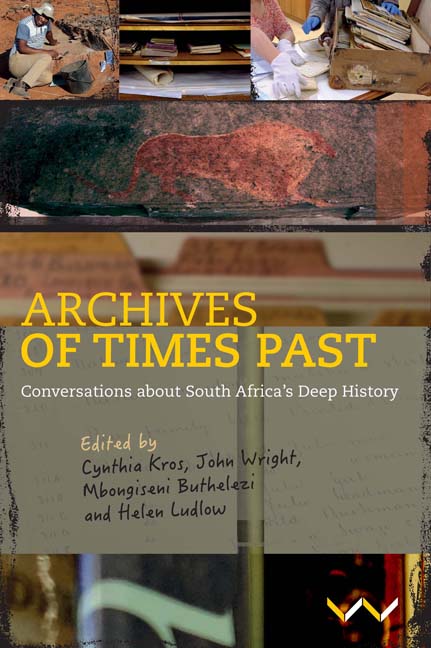Book contents
- Frontmatter
- Contents
- List Of Illustrations
- Acknowledgements
- Editorial Note
- Map
- PART I FIRST THOUGHTS ABOUT THE ARCHIVE
- PART II COMMENTARIES AND CONVERSATIONS
- PART III BECOMING EXPLORERS
- PART IV ENGAGING WITH ARCHAEOLOGY AND ROCK ART
- PART V CONFLICTING OPINIONS
- PART VI FURTHER THOUGHTS
- Glossary
- Contributors
- Index
Chapter 21 - The Archive in Pictures: A Visual Essay
Published online by Cambridge University Press: 26 May 2022
- Frontmatter
- Contents
- List Of Illustrations
- Acknowledgements
- Editorial Note
- Map
- PART I FIRST THOUGHTS ABOUT THE ARCHIVE
- PART II COMMENTARIES AND CONVERSATIONS
- PART III BECOMING EXPLORERS
- PART IV ENGAGING WITH ARCHAEOLOGY AND ROCK ART
- PART V CONFLICTING OPINIONS
- PART VI FURTHER THOUGHTS
- Glossary
- Contributors
- Index
Summary
An ‘archive’ brings together a variety of things that people see as carrying traces of the past. This visual essay explores different archives and ways of working with/in them that contributors engage with in the chapters in this book.
When people think of an archive, they often have in mind a dim room with dusty shelves full of bundles of old documents. There are many archives of this kind. Some are archives created by governments, some by other authorities. The fact that the documents are often old and locked away makes us think that they hold the real truth. This makes them very powerful.
This idea of archive is tied to a tradition that considers written records to be the most reliable source of history. It is an idea that developed alongside the practice of official record keeping as bureaucracies became increasingly complex.
Closely related to this kind of archive are libraries. Libraries are places where many people go to learn about history, because books and other published texts are thought to provide an authoritative account of what happened in the past. Published texts refer to each other, and often to unpublished documents in archives. Collectively they form a powerful literary world.
We give so much importance to writing that this web of interlinked texts can smother histories that have not been written down, or that were written down only recently. The power of text can also suppress histories that are based partly or wholly on different, non-written kinds of evidence.
Archives and libraries are designed to keep their holdings in perpetuity, with the intention of making them available for all time. This further reinforces the power of text.
Even though books and other written texts about the past seem authoritative, they can – and should – be challenged and subjected to critical evaluation. They can be re-read in new and surprising ways. Historical accounts can be debated and even overturned entirely, sometimes multiple times. Sometimes there remains a lot of uncertainty and division.
- Type
- Chapter
- Information
- Archives of Times PastConversations about South Africa's Deep History, pp. 271 - 318Publisher: Wits University PressPrint publication year: 2022



